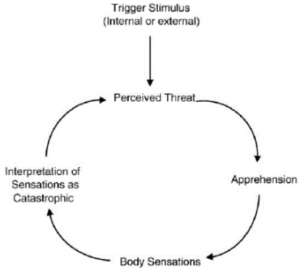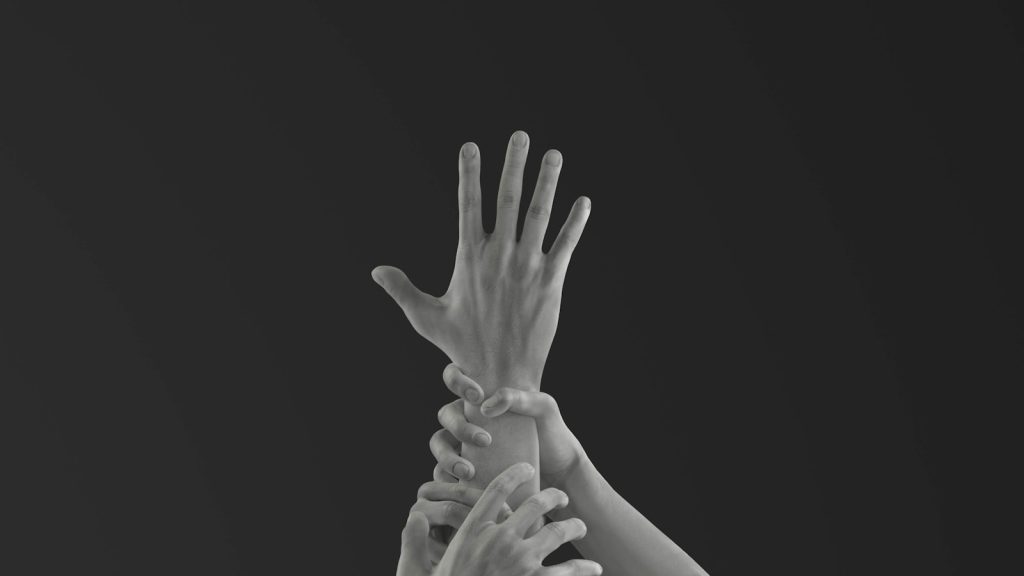Back in university, a friend of mine was suffering from panic attacks. It wasn’t a particular trigger. They appeared and disappeared even more surprisingly. This unpredictability gave her a sense of helplessness. It affected her performance at university, her group of friends, her side job, and most importantly, her mental well-being. She was not the only case; approximately 1 out of 8 people will experience a single panic attack in their life, and 2-3 percent of them will develop a panic disorder.
Symptoms of Panic Attacks:
A metaphor commonly used to describe a panic attack is the feeling of drowning without success. More scientifically, panic attacks are characterized by the following:
Physical symptoms: pounding or racing heart, sweating, chills, trembling, difficulty breathing, dizziness, tingly or numb hands, chest pain, stomach pain, or nausea.
Psychological symptoms: A feeling of being out of control, A fear of death or heart attack, dry mouth, feeling detached from your body or surroundings. Difficulty thinking clearly, feeling confused or disoriented.
If there is an intense worry about when the next panic attack will happen and/or fear or avoidance of places where panic attacks have occurred in the past. It can develop from panic attacks to a panic disorder.
Are they dangerous?
One of the most common misconceptions about panic attacks is them being dangerous. They can mimic or be similar to symptoms of a heart attack, giving rise to the fear of death. In reality, panic attacks do not pose a deadly danger by themselves. A helpful way to view them is like a body alarm. The body is falsely alarming in a very uncomfortable way the body of a potential danger. In other words, during a panic attack, there is no significant harm to the body.
Their Paradox:
If panic attacks are harmless, then it seems peculiar at the beginning that 2-3 percent globally suffer from a panic disorder, which translates approximately to 200 million individuals. To better understand panic attacks, it’s critical to understand the following vicious circle of panic attacks.

Psychological terminology can seem complicated. It’s helpful to explain each term.
Trigger Stimulus (internal or external): It can be a tachycardia (internal) or a specific phobia, such as a snake or public speaking (external).
Perceived Threat: A thought viewing the trigger as dangerous. For example, ‘It must be bad that my heart beats fast’ or ‘If I speak in front of people, I might be humiliated.’
Apprehension: it’s a feeling of anxiety or fear that something unpleasant or dangerous will happen, such as having a heart attack or being judged by a crowd.
Body sensations: Physical manifestations of anxiety such as dizziness, trembling, and difficulty breathing.
Interpretation of sensations as catastrophic: Viewing the bodily sensations as dangerous. For example, thinking, “I can’t breathe, I will have a panic attack, I need to go to the hospital,” exaggerates the feeling of anxiety and fear, giving rise to a panic attack.
Often, the fear of the recurrence of the first panic attack triggers another panic attack without necessarily the presence of the first trigger. The constant fear of another attack often contributes to the development of a panic disorder.
The previous catastrophic thinking strengthens the idea that a trigger such as tachycardia or public speaking is dangerous, as a result, the vicious circle of a panic attack is created, and with every round, the anxiety and the panic attack become more severe. As a very important note, it is not the first trigger that leads to a panic attack, but this maladaptive, catastrophic way of thinking. Therefore, the first step to break away from a panic attack is breaking this vicious circle.
Home take message:
My friend, like countless others, struggled and kept struggling with panic attacks. It’s a harmless yet very detrimental condition. It can prevent people from living a fulfilling life. Most importantly, the first step to support those people is not by avoiding it or offering quick fixes or simple solutions. It’s understanding it and spreading awareness.










